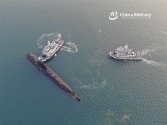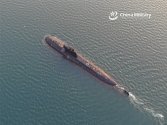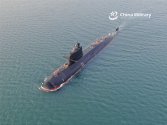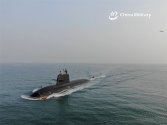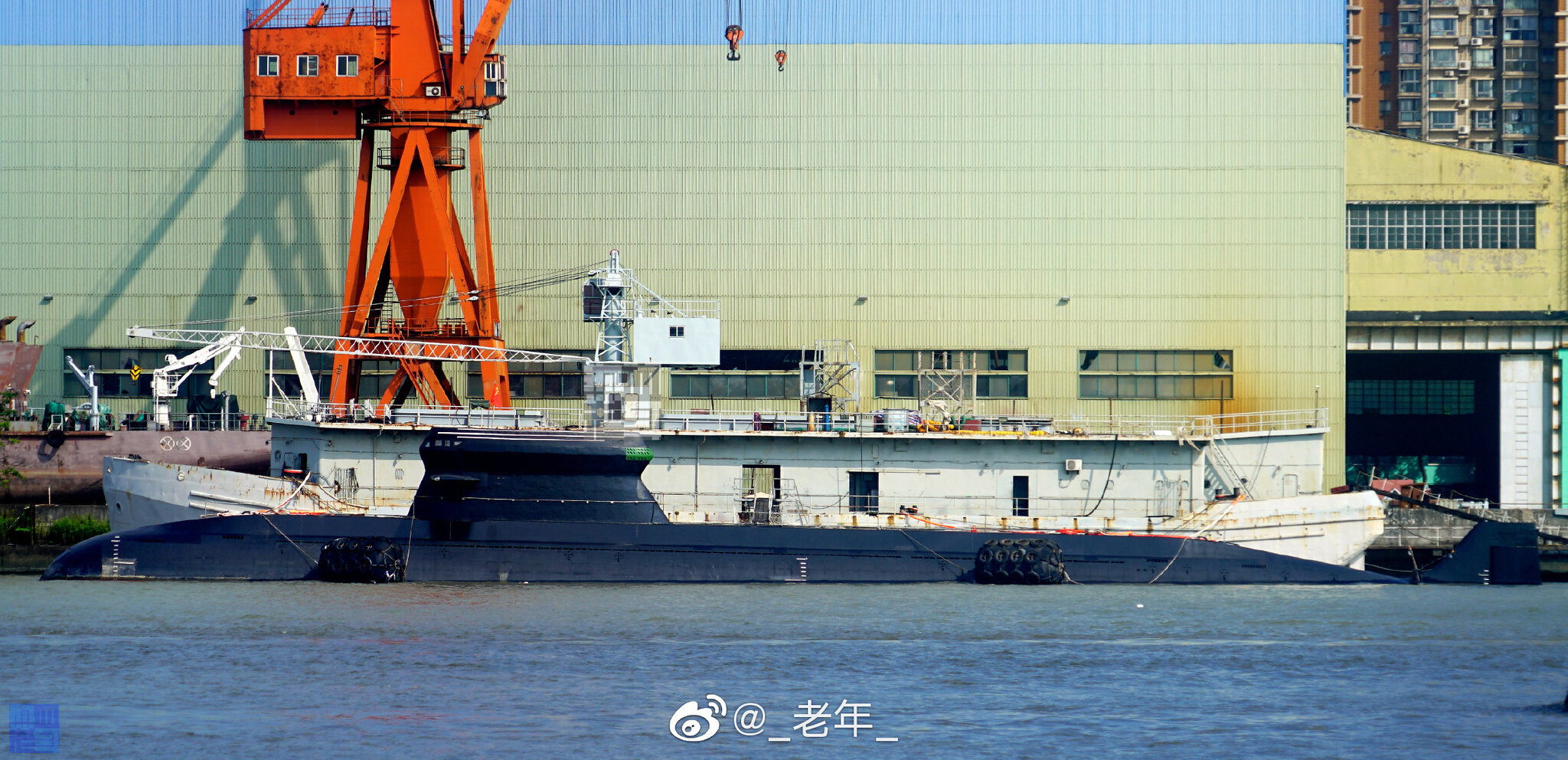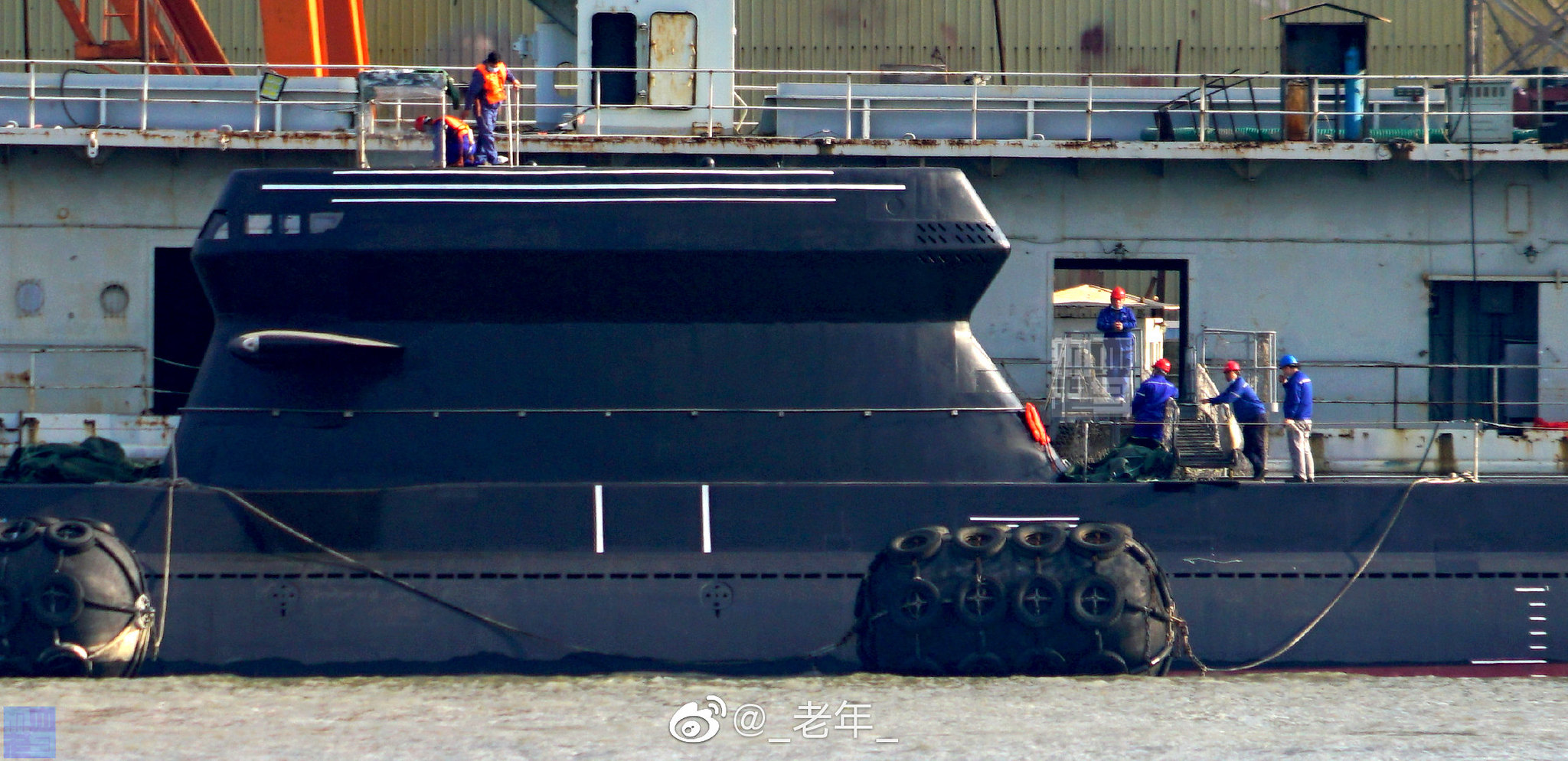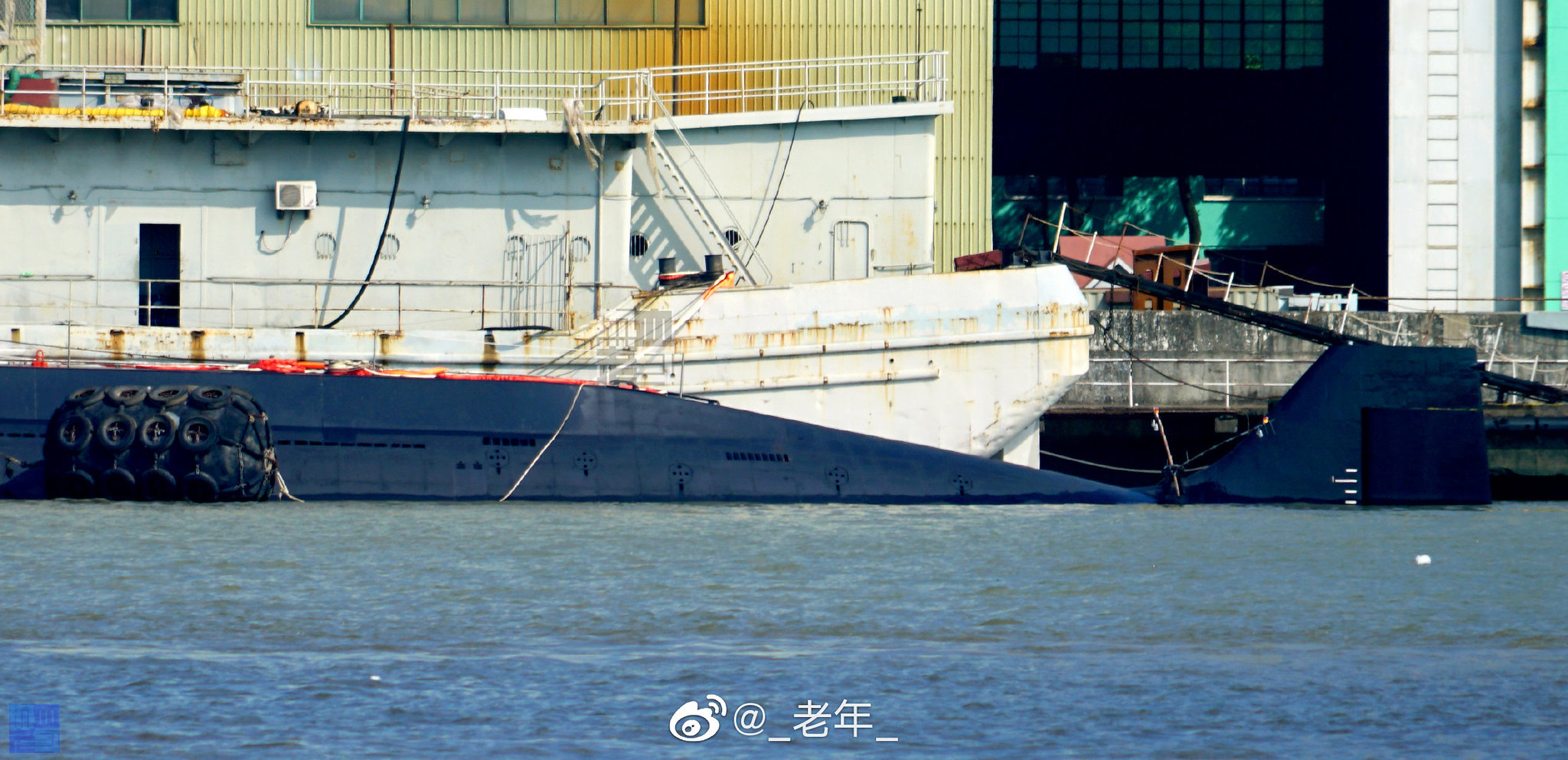You are using an out of date browser. It may not display this or other websites correctly.
You should upgrade or use an alternative browser.
You should upgrade or use an alternative browser.
Yuan Class AIP & Kilo Submarine Thread
- Thread starter Jeff Head
- Start date
Are the white circles the hatches for the crew to get on the back of the hull?
Are the white circles the hatches for the crew to get on the back of the hull?
Yes.
Hendrik_2000
Lieutenant General
Again Via Vincent
China research into fuel cell and shaft-less propeller are progressing
At present, the 712th Research Institute has completed the development of 5.5 kW, 9.5 kW, 20 kW, 75 kW and 200 kW rim thrusters, breaking through the integrated technology of rim thruster propellers, ducts, and permanent magnet motors. At present, the development of the 100-kilowatt-class rim thruster engineering prototype has been completed, and the development of the 1,000-kilowatt rim thruster engineering prototype is underway.
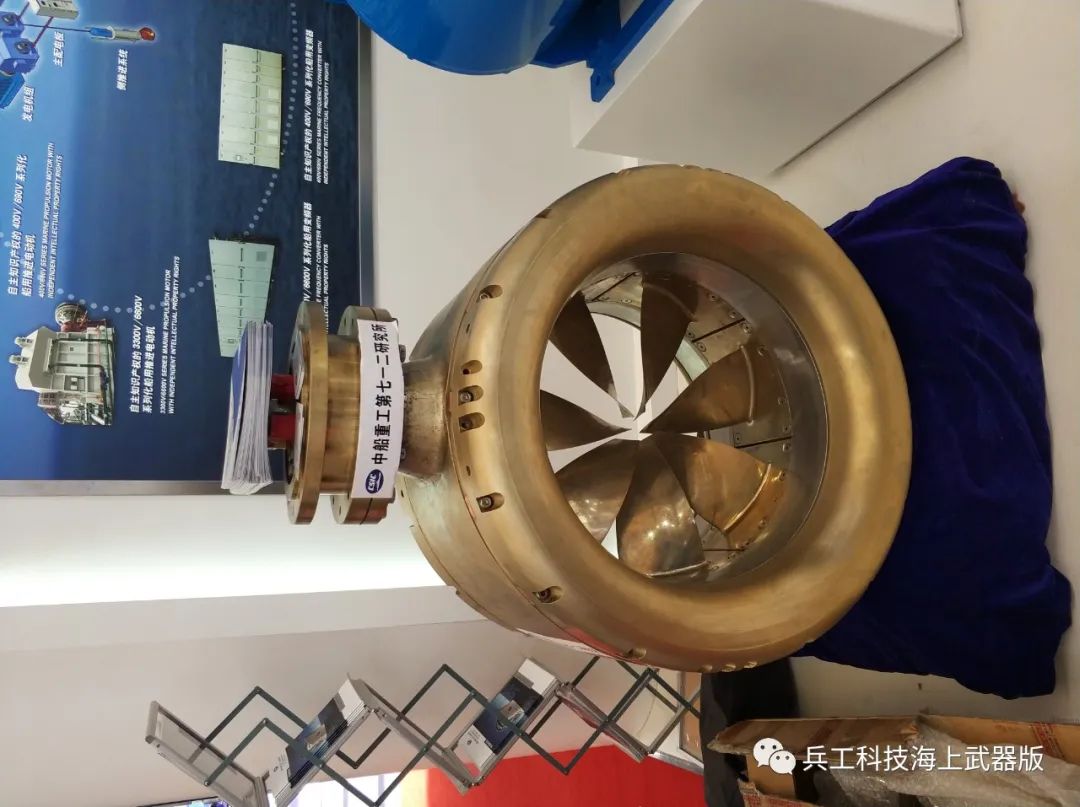
New domestic rim thruster
China research into fuel cell and shaft-less propeller are progressing
At present, the 712th Research Institute has completed the development of 5.5 kW, 9.5 kW, 20 kW, 75 kW and 200 kW rim thrusters, breaking through the integrated technology of rim thruster propellers, ducts, and permanent magnet motors. At present, the development of the 100-kilowatt-class rim thruster engineering prototype has been completed, and the development of the 1,000-kilowatt rim thruster engineering prototype is underway.
New domestic rim thruster
Hendrik_2000
Lieutenant General
Great news research into fuel Cell is progressing
Proton exchange membrane fuel cell
At the 2017 Shanghai Maritime Exhibition, CSIC exhibited an unremarkable exhibit, a domestic 30-kilowatt proton exchange membrane fuel cell stack. So, what are proton exchange membrane fuel cells used for? Proton exchange membrane fuel cell (PEMFC for short) is a kind of fuel cell, which is equivalent to the "inverse" device of water electrolysis in principle. A fuel cell stack can be formed by stacking a plurality of single cells. As a kind of ship power supply device, the fuel cell stack has a very important application in the integrated electric propulsion system. But its wider use is on submarines. At present, PEMFC fuel cell is already an important one in the submarine AIP air-independent propulsion technology. In this technical field, Germany started early in research and development, and currently has the most mature technology.
PEMFC fuel cells are particularly suitable for submarine power because of their high efficiency, large specific energy, wide power range, no pollution, no noise, modular design, and convenient use and maintenance. The proton exchange membrane fuel cell is the ideal power for the submarine AIP. Its main advantages are:
First, expand the cabin capacity and enhance the flexibility and combat effectiveness of the submarine. The PEMFC fuel cell has the advantages of light weight, small size and high power. Since the power system occupies most of the space in the compartment, the use of the PEMFC fuel cell power unit can save the cabin capacity, and thus strengthen the ammunition or other technical equipment, and improve the flexibility and combat effectiveness of the whole boat. Second, improve the concealment of submarines. The active power plant is one of the main vibration sources of submarines, and the noise is large. The structural noise caused by its vibration is radiated underwater through the hull, which can be detected by sonar and easy to be found. Not only destroy the concealment of the submarine, but also interfere with the sonar work of the ship. The PEMFC fuel cell is a noiseless power plant. Third, improve the endurance of submarines. The working life of the PEMFC fuel cell is 20,000 hours, far exceeding the 30-hour life of the general power plant. In this case, the submarine does not need to float for charging, and the use of the PEMFC fuel cell system can greatly improve the underwater endurance of conventional submarines. Fourth, the PEMFC fuel cell is pollution-free. It emits clean water during operation, and will not cause any environmental pollution when discarded. Fifth, the price of SPEMFC fuel cells is low. Due to the efforts of scientific and technological personnel in various countries, the high price of PEMFC fuel cells has been reduced, and its key technologies such as membrane manufacturing and electrode manufacturing technology have made breakthroughs. With the application of PEMFC fuel cells in the industry, its application range is expanding, and the price of PEMFC fuel cells will be lower than other AIP power units.
Germany's Siemens has been researching PEMFC fuel cell technology since 1982. In 1993, it developed a PEMFC fuel cell unit with a rated power of 34 kilowatts. The AIP power system on the Type 212 submarine is composed of the stacks composed of these units.
It can be seen that the 30-kilowatt PEMFC fuel cell stack unit announced by CSIC at this exhibition has the technical capability to be applied to military and civilian ships such as ships and submarines.

Exhibition board of CSIC's integrated electric propulsion system

proton exchange membrane fuel cell
Proton exchange membrane fuel cell
At the 2017 Shanghai Maritime Exhibition, CSIC exhibited an unremarkable exhibit, a domestic 30-kilowatt proton exchange membrane fuel cell stack. So, what are proton exchange membrane fuel cells used for? Proton exchange membrane fuel cell (PEMFC for short) is a kind of fuel cell, which is equivalent to the "inverse" device of water electrolysis in principle. A fuel cell stack can be formed by stacking a plurality of single cells. As a kind of ship power supply device, the fuel cell stack has a very important application in the integrated electric propulsion system. But its wider use is on submarines. At present, PEMFC fuel cell is already an important one in the submarine AIP air-independent propulsion technology. In this technical field, Germany started early in research and development, and currently has the most mature technology.
PEMFC fuel cells are particularly suitable for submarine power because of their high efficiency, large specific energy, wide power range, no pollution, no noise, modular design, and convenient use and maintenance. The proton exchange membrane fuel cell is the ideal power for the submarine AIP. Its main advantages are:
First, expand the cabin capacity and enhance the flexibility and combat effectiveness of the submarine. The PEMFC fuel cell has the advantages of light weight, small size and high power. Since the power system occupies most of the space in the compartment, the use of the PEMFC fuel cell power unit can save the cabin capacity, and thus strengthen the ammunition or other technical equipment, and improve the flexibility and combat effectiveness of the whole boat. Second, improve the concealment of submarines. The active power plant is one of the main vibration sources of submarines, and the noise is large. The structural noise caused by its vibration is radiated underwater through the hull, which can be detected by sonar and easy to be found. Not only destroy the concealment of the submarine, but also interfere with the sonar work of the ship. The PEMFC fuel cell is a noiseless power plant. Third, improve the endurance of submarines. The working life of the PEMFC fuel cell is 20,000 hours, far exceeding the 30-hour life of the general power plant. In this case, the submarine does not need to float for charging, and the use of the PEMFC fuel cell system can greatly improve the underwater endurance of conventional submarines. Fourth, the PEMFC fuel cell is pollution-free. It emits clean water during operation, and will not cause any environmental pollution when discarded. Fifth, the price of SPEMFC fuel cells is low. Due to the efforts of scientific and technological personnel in various countries, the high price of PEMFC fuel cells has been reduced, and its key technologies such as membrane manufacturing and electrode manufacturing technology have made breakthroughs. With the application of PEMFC fuel cells in the industry, its application range is expanding, and the price of PEMFC fuel cells will be lower than other AIP power units.
Germany's Siemens has been researching PEMFC fuel cell technology since 1982. In 1993, it developed a PEMFC fuel cell unit with a rated power of 34 kilowatts. The AIP power system on the Type 212 submarine is composed of the stacks composed of these units.
It can be seen that the 30-kilowatt PEMFC fuel cell stack unit announced by CSIC at this exhibition has the technical capability to be applied to military and civilian ships such as ships and submarines.
Exhibition board of CSIC's integrated electric propulsion system
proton exchange membrane fuel cell
How is that supposed to be mounted on a sub, like azipods along the side of the hull, instead of a single centre shaft propller/propulsor?Again Via Vincent
China research into fuel cell and shaft-less propeller are progressing
At present, the 712th Research Institute has completed the development of 5.5 kW, 9.5 kW, 20 kW, 75 kW and 200 kW rim thrusters, breaking through the integrated technology of rim thruster propellers, ducts, and permanent magnet motors. At present, the development of the 100-kilowatt-class rim thruster engineering prototype has been completed, and the development of the 1,000-kilowatt rim thruster engineering prototype is underway.

New domestic rim thruster
Still, 1,000kW isn't a lot. They'd probably need at least 6 of those to match the output of those Kockumses on a Soryu, for instance.
Wait for future improvements (also the one in the picture seems quite small so room for enlargement?)How is that supposed to be mounted on a sub, like azipods along the side of the hull, instead of a single centre shaft propller/propulsor?
Still, 1,000kW isn't a lot. They'd probably need at least 6 of those to match the output of those Kockumses on a Soryu, for instance.
It remains to be seen if they could get those up to 3,000kW per pod (nobody has done it yet AFAIK), which would be quite incredible in its own right.Wait for future improvements (also the one in the picture seems quite small so room for enlargement?)
Because in such a case all they'd need is a conventional twin propeller/pod layout similar to the Deltas/Typhoons, which is as much as one could ask for with this particular tech, since I'm not sure how feasible it would be to make a shaft-less propeller pod that's rated at 6,000kW+.
plawolf
Lieutenant General
I think these pods would be more for UUVs rather than straight substitutes for conventional submarine propulsion.
The biggest advantage these pods offer is radically improved agility as these pods would allow a submarine to move like a quodcoptor drone could on land.
That kind of agility would be too much for manned platforms, but would not present any issues for unmanned, which is where the true potential lies.
The biggest advantage these pods offer is radically improved agility as these pods would allow a submarine to move like a quodcoptor drone could on land.
That kind of agility would be too much for manned platforms, but would not present any issues for unmanned, which is where the true potential lies.

